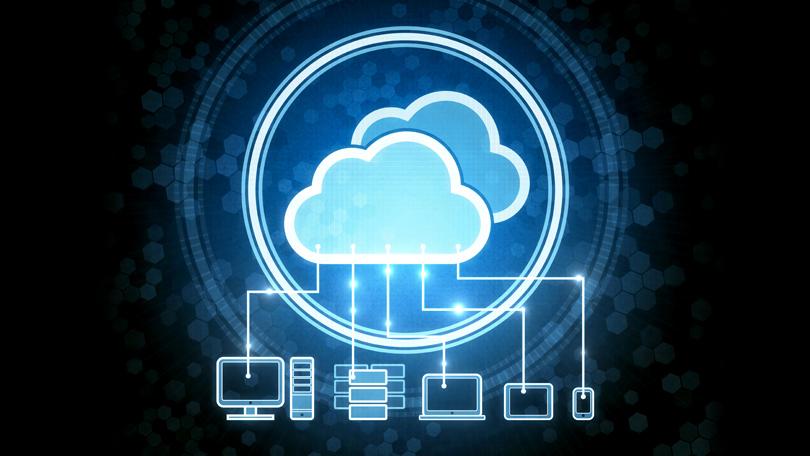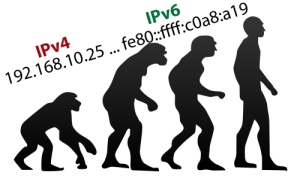
State of the Net 2018
I’ve spoken to the some of the best and brightest in the connectivity market over the last quarter. In hearing their ideas on trends, business opportunities and what clients are asking for; there is a clear direction the US is headed for over the next 3 years. I will be writing about SD-WAN, CDN’s and MVNOs over the next few articles. To understand each topic, you have to understand the state of the Internet as we head into 2018. I’m putting forth my understanding of what’s happened over the last few years. I believe it spells out the culmination of a massive market shift of epic proportion. Follow me down the rabbit hole…
Media-Streaming
Data consumption use to be easy. Textual data like emails, texts and websites were the norm for daily traffic. High-res imagery was woven into daily consumption, and forced higher speeds globally. With the advent of “download / sync” services like iTunes, file transfers were accommodated and eventually welcomed as they were a “CAPEX” cost to a network operator. Once downloaded, the richer media like music and videos ran offline. Streaming media has changed all that.
 In 2017 streaming services like Spotify, Hulu and Netflix dominate Internet traffic. They have overtaken download/sync services and pushed our networks to the brink of collapse. The need for QoS, CDNs and compression has never been higher. How do we optimize and control our networks? How do we allow video and audio content to stream reliably without destroying the ability for fair throughput to all subscribers?
In 2017 streaming services like Spotify, Hulu and Netflix dominate Internet traffic. They have overtaken download/sync services and pushed our networks to the brink of collapse. The need for QoS, CDNs and compression has never been higher. How do we optimize and control our networks? How do we allow video and audio content to stream reliably without destroying the ability for fair throughput to all subscribers?
Traditional media services like CATV and Satellite have struggled to remain the dominant method of broadcast. Watching habits, content providers and complex business models have given way to direct-to-consumer subscription services that put the onus of delivery on ISPs and network operators. This has resulted in new requirements and an appetite for younger and fresh technologies.
The Cloud
The software business was massively disrupted by mobile in 2008. It has become the expectation of consumers and enterprise that software be provided inexpensively. Perpetual licensing went out the window. The market’s answer to this was SaaS. Monthly reoccurring costs exchanged for ongoing access to updates and licenses. As the software vertical shifted towards SaaS, hosting providers were next. The appetite for OPEX budgets were prioritized over CAPEX investments. This meant that data centers, storage, processing power and hosting would all need to be available inexpensively. Back-end systems were all turned over to organizations with professional services and sold back to the consumer as a MRC. Amazon, Google, Salesforce and Microsoft quickly clamored towards dominance.

Network operators rejoiced! This meant more throughput and the need for secure and reliable circuits to be landed at cloud-providers and end-user locations. Coast-to-Coast connectivity that enterprise couldn’t build on their own. MPLS and broadband circuits became the second coming. With every organization being pushed the cloud, network operators became flush with end-points, tier’ed services and backup alternatives. If a consumer’s data was being licensed back to them on 3rd party servers, connectivity became the glue that keeps order and stability. Significant Internet traffic is due to communications between branch offices, consumers and cloud-services or platforms.
Advertising
What pays for all these services?!! The Internet is littered with free platforms, cheap licensing, simplified hosting and un-throttled media streaming. In 2018 the Internet is a beating nerve-center of information and unparalleled access. It is a metropolis of on-demand entertainment offered free-of-charge. It’s no wonder broadcast models, content creators and distribution businesses are failing at an alarming rate. Any unincorporated person has access and tools to create, publish and broadcast anything to anyone without the hassle of middlemen. How is this afforded? There are a myriad of ways to incentivize access; subscription being a popular option. But subscriptions are not what’s paying for the majority of offerings. Advertising is.
 Advertising has proven to offer 2 key benefits. The more positive being it pays creators for access to their audiences. The more eyeballs that see the ad, the more they pay. The reality in 2017 was, advertising became the necessary enemy. Consumers found ways of blocking, subverting or hiding advertisements. This drove the return from advertisers lower and lower. Business had to have alternative revenues to survive. Premium offerings directly spat in the face of advertising insinuating it was “annoying” and demanded a price to deliver content sans advertising. Never-the-less, advertising has proven to be effective in either case.
Advertising has proven to offer 2 key benefits. The more positive being it pays creators for access to their audiences. The more eyeballs that see the ad, the more they pay. The reality in 2017 was, advertising became the necessary enemy. Consumers found ways of blocking, subverting or hiding advertisements. This drove the return from advertisers lower and lower. Business had to have alternative revenues to survive. Premium offerings directly spat in the face of advertising insinuating it was “annoying” and demanded a price to deliver content sans advertising. Never-the-less, advertising has proven to be effective in either case.
Advertising, from a network operator’s point of view, involves high res imagery, audio & video content, interactivity and ubiquity across mobile, web and home. Advertising networks have gotten significantly better at delivering accurate analytics on measurability. They have also proven call-to-action. Google is famous for it’s Pay-Per-Click model. Advertising has proven to be the grease that lubricates business. It also carries along with it it’s own overhead in processing, storage and network bandwidth. It has allowed the Internet to sustain through infancy and acts as a hormone continuing growth into adolescence. It drives legitimacy to Internet businesses increasing demand for connectivity and speed.
Mobile
There’s no questioning the power of network connectivity, mobilized. Smartphones have disrupted numerous business models, as well as creating some of their own. Allowing people to perform purchases, investigations, media consumption and communications on-the-road has given way to a shift in culture that rivals previous moments in human history!
 The demand for reliable communications in-the-field along with speed that matches broadband in-the-home is indisputable. We sit at the precipice of massive changes to wireless technology. Cell carriers are on the verge of overtaking wired network infrastructure as the dominant form of connectivity, not just with consumers, but with enterprise as well. Mobile platforms have proven to be resilient and trustworthy. The globalization of network connectivity has also played a roll. While traditional networks are grounded in Earth, wireless technologies follow consumers wherever they go.
The demand for reliable communications in-the-field along with speed that matches broadband in-the-home is indisputable. We sit at the precipice of massive changes to wireless technology. Cell carriers are on the verge of overtaking wired network infrastructure as the dominant form of connectivity, not just with consumers, but with enterprise as well. Mobile platforms have proven to be resilient and trustworthy. The globalization of network connectivity has also played a roll. While traditional networks are grounded in Earth, wireless technologies follow consumers wherever they go.
Flight, space, multiple continents.
5G is going to revolutionize wireless connectivity. Harnessing the power of this technology and overlaying the tools needed to make it viable in business is key. The world waits on bated breath as we enter the 5G world.
Retail
The beauty of retail and network connectivity is both brick-and-mortar and online retailers contribute. As brick-and-mortar retail transforms, it has shown that a strategy around smaller, more plentiful locations works. This means larger corporate WANs, a focus on edge security and the need for resilient connections. Physical branches now offer a suite of services previously unneeded, such as guest WiFi, digital signage and smart fixturing. As Amazon demonstrates, cashwrap-less environments are coming. This requires streaming video and data warehousing by the ton.
Online retailers bring their own demands. More complex integrations. The need for more expansive protection. Creative traffic flows between numerous data-centers. The online retailer lives and dies by it’s network topology, and server architecture.
 Shopping on mobile also drives traffic. In 2017 Amazon saw a shift in website traffic vs mobile purchases. This trend was seen throughout online retailers during the holiday season. Again, proving that retail is heavily impacting network operators and trending towards omni-channel strategies. Retailers are becoming lifestyle brands that unify the experience in-home and on mobile.
Shopping on mobile also drives traffic. In 2017 Amazon saw a shift in website traffic vs mobile purchases. This trend was seen throughout online retailers during the holiday season. Again, proving that retail is heavily impacting network operators and trending towards omni-channel strategies. Retailers are becoming lifestyle brands that unify the experience in-home and on mobile.
IPv4 / IPv6
Public IPv4 addresses have been completely exhausted around the globe. What’s this mean? The Internet we know cannot be addressed beyond what it is today. It has been this way since 2011, limping along with the promise of IPv6 adoption. While IPv6 has taken some time to permeate central services, it is present in almost 40% of US Internet traffic in 2017. ISPs, CDNs and MNOs (cell carriers) are all mid-way through network-wide adoption. It’s been long rumored that running a ubiquitous IPv6 network carries less cost due to less registrations and complexities. T-Mobile confirmed this in 2017 as have Akamai and other central service providers. These providers will continue to migrate until which point they can truly deploy IPv6 on devices, consumer networks and IoT. The cost savings are real, which is driving heavy investment in getting networks to IPv6.
 As the Internet rebirths to new protocols, it’s abilities extend far beyond previous limitations. Individual devices will soon be addressable from anywhere in the world. Networks will reduce in complexity and increase in efficiency. Security will be woven into the fabric of network communications. IPv6 brings a host of advantages over IPv4, but carries enormous changes that will require professionals to accept. Time and death will take care of the main culprit bottleneck’ing world-wide endorsement. Despite the apprehensive professional, IPv6 is contributing to Internet global trends and the ratification of new networks…and appliances.
As the Internet rebirths to new protocols, it’s abilities extend far beyond previous limitations. Individual devices will soon be addressable from anywhere in the world. Networks will reduce in complexity and increase in efficiency. Security will be woven into the fabric of network communications. IPv6 brings a host of advantages over IPv4, but carries enormous changes that will require professionals to accept. Time and death will take care of the main culprit bottleneck’ing world-wide endorsement. Despite the apprehensive professional, IPv6 is contributing to Internet global trends and the ratification of new networks…and appliances.
Macro Thoughts…
- Media-streaming has become the most popular way of consuming content online
- Businesses have fully embraced “the cloud”
- Advertising is proving to be resilient online, fostering growth and other funding models
- Mobile and cellular tech is bursting at the seams, giving birth to 5G this year
- Retail is maturing online, giving way to mobile-everything, while brick-and-mortar deploys micro-shoppes and larger footprints
- IPv6 is contributing to cheaper and more addressable networks
The picture begins to come into focus. Pieces and parts of each trend above bleed into the supporting network businesses. What I believe you’ll see in 2018 through 2020 is:
- Software-defined mentalities taking control. The virtualization of networks, allowing fluid control and deployment.
- Content delivery networks enlarging, offering content-at-the-edge
- MNOs deploying 5G and overtaking traditional infrastructure when appropriate
- More MVNOs attaching to legacy LTE infrastructure giving way to extremely cheap bandwidth to consumers
- The explosion of network technologies in the consumer and enterprise spaces. Think Google WiFi and Eero alongside Meraki and Ubiquiti
- Emergence of proprietary offerings in security, application-layer and control. Cloudflare is just the beginning…
I believe 2018 will begin to show the true commoditization of enterprise networking, which has been seen in consumer markets in years past. I also believe that the speed in which this will occur will give way to an appetite for new technologies. Cisco and Juniper may not be able to move swiftly enough to keep their stronghold on the market. Network integrators will need to offer software and solutions in the face of simpler IPv6 networks. Content providers will be competing on an even plane as CDNs have a compelling product to proprietary offerings. The market is finally shifting and showing a future that’s significantly different than what it’s been since 1990. Are you ready?


